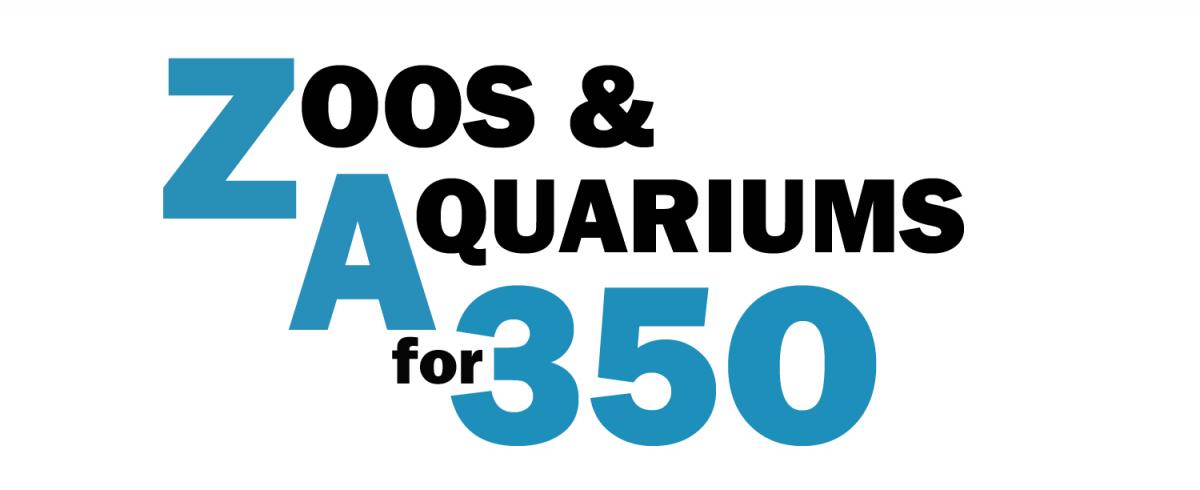
Handbook
How do carbon offsets work?
The purchase of carbon offsets provides funding for new initiatives that reduce greenhouse gas emissions, such as energy efficiency projects or forest protection. The offsetting process begins with calculating the amount of carbon an institution emits in a certain time period. Efforts to reduce this carbon footprint are made by reducing waste or using renewable energy. The amount of carbon emissions remaining can be balanced by the purchase of carbon offsets.
What is a carbon offset provider?
Carbon offset providers are companies that create portfolios of carbon offset projects and provide resources such as carbon emission calculators. Carbon offset providers can measure carbon footprints and help with an overall climate action plan leading to carbon neutrality.
How will the Zoos and Aquariums for 350 carbon offsetting process work?
CBSG and WAZA are working together to select a carbon offset provider for the zoo and aquarium community. This provider will work with zoos on whatever services that zoo needs: measuring carbon footprint, help reducing carbon footprint, and purchasing carbon offsets from that provider. The provider will offer a range of projects for each zoo to pick from to offset their remaining carbon emissions. Each zoo will do their own work within their institution, but will report back to WAZA about the amount of carbon they reduce and offset. WAZA will report on this information and the Z&A for 350 celebrate progress on this initiative. More information on the reporting process will be available soon.
What are some examples of carbon offset projects?
Carbon offset projects include reforestation, renewable energy (wind and solar), methane reduction, energy efficiency, and bio-gas projects. Good projects include additional benefits besides offsetting carbon, including social, welfare, and health benefits for local communities and wildlife. These projects are certified according to agreed-upon standards created by third party registries. The Z&A for 350 offset provider will clearly state which standards their projects meet. Working with a provider enables each zoo or aquarium to choose projects that fit with its mission and meet its own standards.
What are the standards in place to ensure successful projects?
The major voluntary carbon offset standards were developed to establish offset credits from emissions reductions as real, additional (meaning that it would not have occurred without money from carbon credits), and permanent. Credible standards clearly define the methodology for establishing baseline emissions, terms for project additionality, project type, third party verification and validation, and methodology for selling and retiring offsets. The provider selected will offer projects compatible with WAZA’s mission and focus on threatened species and related habitats, with preference given to tropical rainforest projects.
How can we be sure our money is actually doing what we want it to do?
Z&A for 350 will choose a provider that is transparent in their project design, project standards, and review process. International standards reinforce the provider’s promise that the money used to purchase offsets results in true reduction of emissions. Participating zoos and aquariums will be able to see detailed reports about their chosen project.
How much does carbon offsetting cost?
Our provider will have a set price per ton of carbon. Carbon emissions are calculated to determine the number of tons that offsets will need to be purchased for. The more tons of carbon your zoo emits, the more offset credits you must buy to achieve carbon neutrality.
What if my zoo is already carbon neutral or already offsets our carbon emissions?
If your zoo has already achieved carbon neutrality, or is already working toward it, you can still participate in this initiative! Simply report to Z&A for 350 on your progress, how many tons you offset, and the type of projects your institution invests in. That way, we can include your accomplishments in reports of global zoo efforts.
Does the whole concept of offsetting actually work?
Offsetting is not an excuse to continue emitting carbon as usual, and must be preceded and supplemented by continued emission reduction efforts. It can serve as an incentive to further reduce emissions. The implementation of rigorous carbon offset standards has become a trustworthy indicator of offset project quality and actual greenhouse gas reductions, so the money paid for offsets is successfully reducing carbon emissions.
Back to Carbon Offsetting page.


